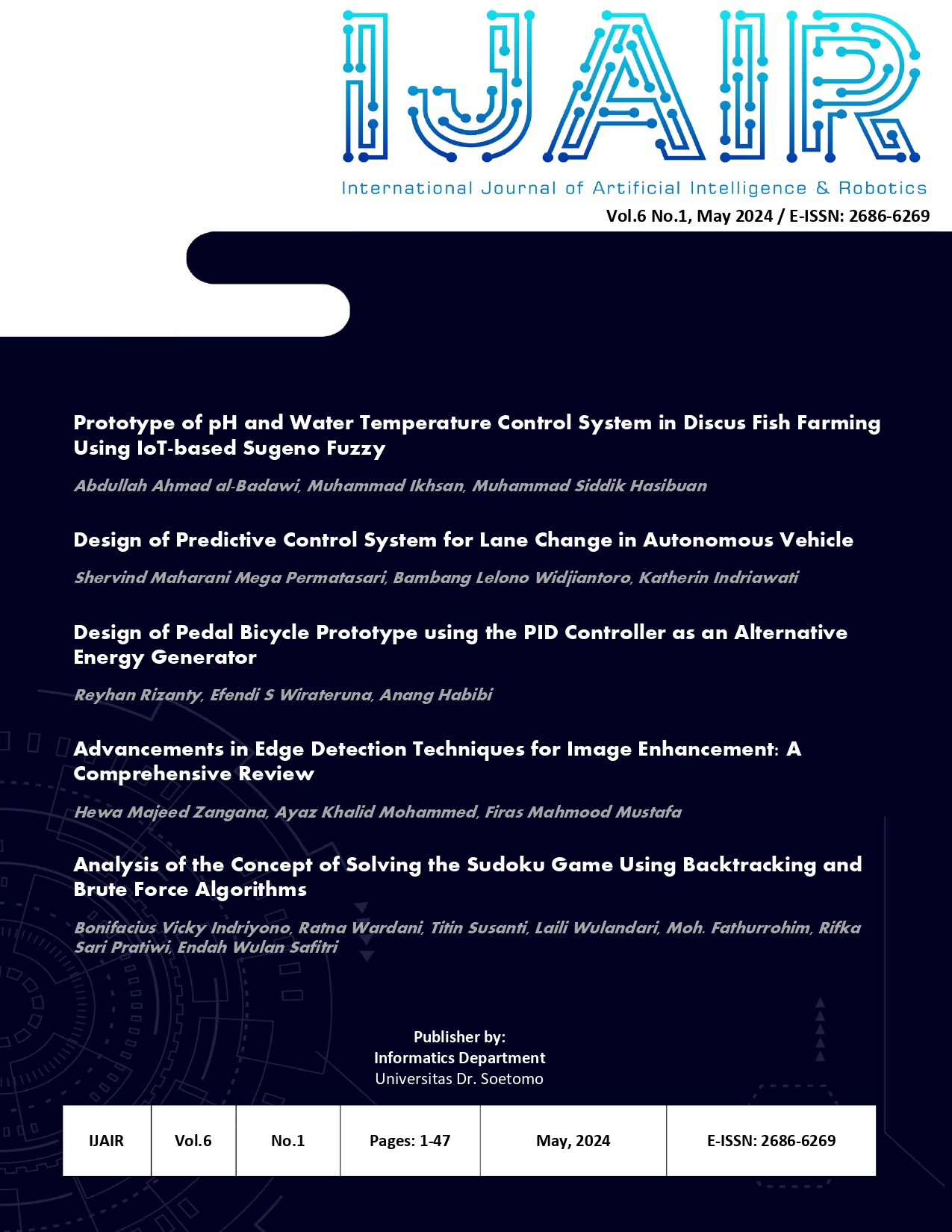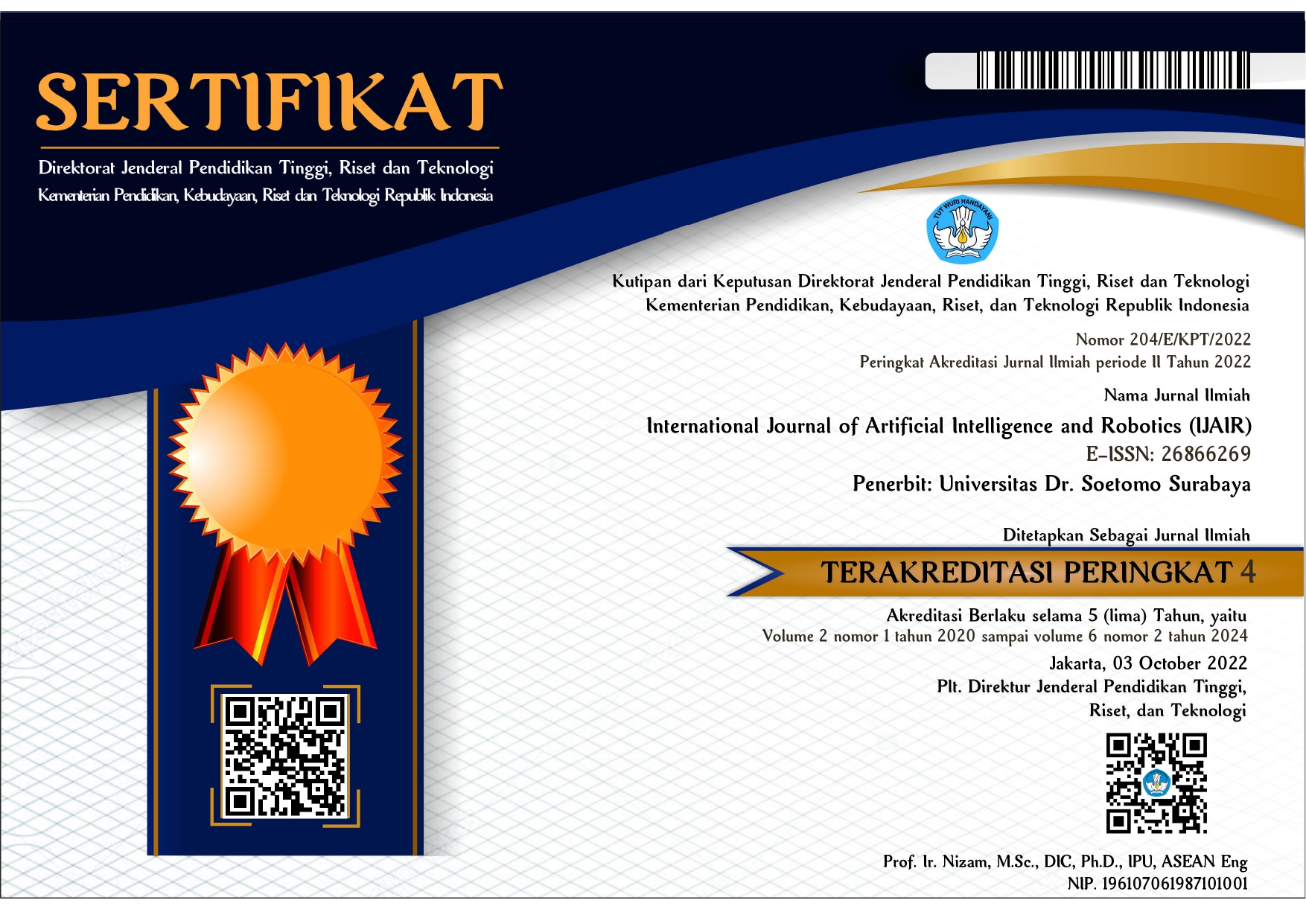Design of Predictive Control System for Lane Change in Autonomous Vehicle
 Abstract views: 216
,
Abstract views: 216
,
 PDF downloads: 149
PDF downloads: 149
Abstract
The automobile business is introducing a lot of autonomous vehicles in the modern day. Lane changes are one of the most complicated urban scenarios in which autonomous vehicles are used. Self-driving automobiles must thus interact with human-driven vehicles in a certain way. In this work, we concentrate on the autonomous vehicle's lane-changing control system for obstacle avoidance. This study employs a predictive control system as its methodology. The vehicle's next movements can be predicted by this control system. The vehicle's position, which is adjusted by the steering angle, is the controllable variable. The vehicle's position, which is adjusted by the steering angle, is the controllable variable. It is clear from the numerical simulation results that the predictive control system executes control actions on lane changes correctly, avoiding collisions with the running vehicle obstacles. RMSE (Root-Mean Square Error) is a performance metric that is derived from the difference between the vehicle's lateral position and the reference trajectory value. The RMSE of the planned predictive control is 0.9681.
Downloads
References
S. Thrun et al., "Stanley : The Robot that Won the DARPA Grand Challenge," vol. 23, no. June, pp. 661–692, 2006.W.-K. Chen, Linear Networks and Systems (Book style). Belmont, CA: Wadsworth (1993) 123–135.
C. Urmson et al., "Autonomous Driving in Urban Environments : Boss and the Urban Challenge," vol. 25, no. February, pp. 425–466, 2008..
M. Almaged and A. Mahmood, "Autonomous Model Vehicles : Signal Conditioning and Digital Control Design," no. September 2018, 2019.
J. Liu, P. Jayakumar, J. L. Stein, and T. Ersal, "An MPC algorithm with combined speed and steering control for obstacle avoidance in autonomous ground vehicles," ASME 2015 Dyn. Syst. Control Conf. DSCC 2015, vol. 3, 2015.
Arfianti, Rida Ayu (2024) Perancangan Sistem Kontrol untuk Obstacle Avoidance pada Autonomous Vehicle dengan Kontrol Prediktif Berbasis Robot Operating System (ROS). Masters thesis, Institut Teknologi Sepuluh Nopember.
Permatasari, Shervind Maharani (2023) Perancangan Sistem Trajectory Generation Pada Autonomous Vehicle Menggunakan A* Algorithm. Other thesis, Institut Teknologi Sepuluh Nopember.
Hu, X., Chen, L., Tang, B., Cao, D., & He, H. (2018). Dynamic path planning for autonomous driving on various roads with avoidance of static and moving obstacles. Mechanical Systems and Signal Processing, 100, 482–500. https://doi.org/10.1016/j.ymssp.2017.07.019
Li, X., Sun, Z., Cao, D., He, Z., & Zhu, Q. (2016). Real-time trajectory planning for autonomous urban driving: Framework, algorithms, and verifications. IEEE/ASME Transactions on Mechatronics, 21(2), 740–753. https://doi.org/10.1109/TMECH.2015.2493980
Liu, J., Jayakumar, P., Stein, J. L., & Ersal, T. (2015). An MPC algorithm with combined speed and steering control for obstacle avoidance in autonomous ground vehicles. ASME 2015 Dynamic Systems and Control Conference, DSCC 2015, 3. https://doi.org/10.1115/DSCC2015-9747
Liu, J., Jayakumar, P., Stein, J. L., & Ersal, T. (2019). Improving the robustness of an MPC-based obstacle avoidance algorithm to parametric uncertainty using worst-case scenarios. Vehicle System Dynamics, 57(6), 874–913. https://doi.org/10.1080/00423114.2018.1492141
S. Brown, M. Lee, dan C. Wilson, "Trajectory Planning for Autonomous Vehicles Using the Kinematic Bicycle Model," IEEE Transactions on Intelligent Transportation Systems,
C. Huang, F. Naghdy and H. Du, "Model predictive control-based lane change control system for an autonomous vehicle," 2016 IEEE Region 10 Conference (TENCON), Singapore, 2016, pp. 3349-3354, doi: 10.1109/TENCON.2016.7848673. keywords: {Wheels;Actuators;Radio frequency;Feedforward neural networks;Lane change control;model predictive control;vehicle safety;autonomous vehicle},
Copyright (c) 2024 Shervind Maharani Mega Permatasari, Bambang Lelono Widjiantoro, Katherin Indriawati

This work is licensed under a Creative Commons Attribution-ShareAlike 4.0 International License.
Authors who publish with International Journal of Artificial Intelligence & Robotics (IJAIR) agree to the following terms:
-
Authors retain copyright and grant the journal right of first publication with the work simultaneously licensed under a Creative Commons Attribution License (CC BY-SA 4.0) that allows others to share the work with an acknowledgment of the work's authorship and initial publication in this journal.
-
Authors are able to enter into separate, additional contractual arrangements for the non-exclusive distribution of the journal's published version of the work (e.g., post it to an institutional repository or publish it in a book), with an acknowledgment of its initial publication in this journal.
-
Authors are permitted and encouraged to post their work online (e.g., in institutional repositories or on their website) prior to and during the submission process, as it can lead to productive exchanges, as well as earlier and greater citation of published work.















